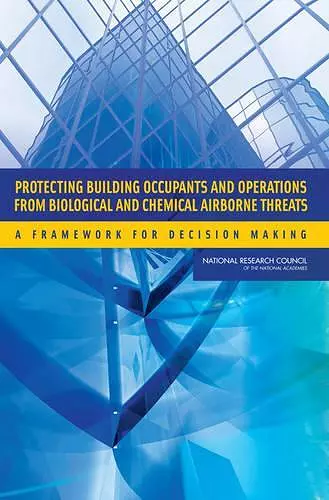Protecting Building Occupants and Operations from Biological and Chemical Airborne Threats
A Framework for Decision Making
National Research Council author Division on Earth and Life Studies author Board on Life Sciences author Board on Chemical Sciences and Technology author Committee on Protecting Occupants of DOD Buildings from Chemical and Biological Release author
Format:Paperback
Publisher:National Academies Press
Published:10th Sep '07
Currently unavailable, and unfortunately no date known when it will be back

Protecting buildings and their occupants from biological and chemical attacks to ensure continuous building operations is seen as an urgent need in the Department of Defense, given recent technological advances and the changing threats. Toward this end, the Department of Defense established the Immune Building Program to develop protective systems to deter biological and chemical attacks on military facilities and minimize the impacts of attacks should they occur. At the request of the Defense Threat Reduction Agency, the National Research Council convened a committee to provide guiding principles for protecting buildings from airborne biological or chemical threat agents and outline the variables and options to consider in designing building protection systems. This report addresses such components of building protection as building design and planning strategies; heating, ventilating, and air-conditioning systems; filtration; threat detection and identification technologies; and operational responses. It recommends that building protection systems be designed to accommodate changing building conditions, new technologies, and emerging threats. Although the report's focus is on protection of military facilities, the guiding principles it offers are applicable to protection of public facilities as well.
Table of Contents- Front Matter
- Summary
- 1 Introduction
- 2 Factors That Influence Building Protection
- 3 Components of Building Protection
- 4 Metrics and System Evaluation
- 5 Analysis of Current and Prior Building Protection Programs and Studies
- 6 Deployment and Decision-Making Resources
- 7 Conclusions and Recommendations
- References
- Appendix A: Statement of Task
- Appendix B: Committee Member Biographies
- Appendix C: Presentations to the Committee
- Appendix D: Acronyms and Abbreviations
- Appendix E: Glossary <
ISBN: 9780309109550
Dimensions: unknown
Weight: unknown
152 pages